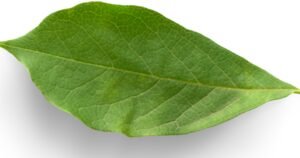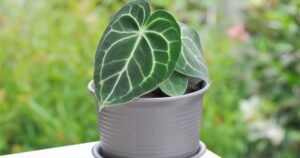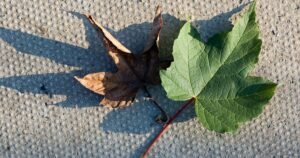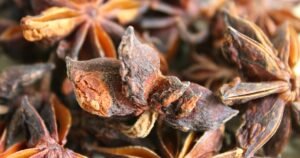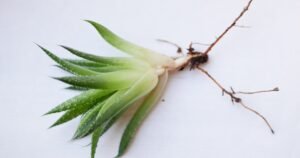There’s a unique and luxurious quality about plants that have soft, velvety textures. These Plants That Feel Like Velvet not only appeal to the eyes but also invite touch, providing a tactile experience that’s both pleasing and sensory.
- Alocasia
- Philodendron
- Gynura aurantiaca
- Laceleaf
- Calatheas
- Alocasia reginula
- Philodendron gigas
- Anthurium clarinervium
- Philodendron gloriosum
In this article, we’ll explore various plants that boast a velvet-like touch and delve into the fascinating world of their textures and the allure they bring to gardens.
Introduction to Velvet-Like Plants
Velvet-like plants are often characterized by a layer of tiny hairs on their leaves or stems, creating a texture that’s irresistibly soft to the touch.
This unique feature is not just for aesthetics; it also helps the plant retain moisture, deter pests, and survive in harsh sunlight.
Some famous examples include the African Violet, with its fuzzy leaves, and the Lamb’s Ear, known for its thick, soft foliage.
These plants bring an element of tactile beauty to any garden, enriching the space with their diverse shapes, colors, and textures.
- Velvet-like plants are those with soft, plush, and velvety textures on their leaves, stems, or flowers.
- The softness and velvety feel are often attributed to specialized plant structures like trichomes, which are tiny hair-like structures on the plant’s surface.

Trichomes: The Secret to Velvet Texture
Trichomes are microscopic, hair-like outgrowths originating from the epidermal cells of plants.
They take on various shapes and sizes, from simple and unbranched to complex and branched structures, and are responsible for the soft, velvet-like feel of certain plants.
Trichomes serve multiple functions, with the most notable being protection against environmental stresses, herbivory, and excessive evaporation.
They also play a role in the plant’s defense mechanism by producing substances that are unpalatable or toxic to pests.
Despite their microscopic size, trichomes significantly contribute to a plant’s survival strategy while adding tactile and visual appeal to your garden.
- Trichomes are microscopic hair-like structures found on the surface of plant parts, including leaves, stems, and flowers.
- These structures can vary in shape, size, and density, contributing to the different textures observed in plants.
- Trichomes can serve various purposes, such as deterring herbivores, reducing water loss, or aiding in capturing prey in carnivorous plants.

Plants with Velvet-Like Leaves
One of the most recognizable plants with velvety leaves is the African Violet (Saintpaulia).
This popular houseplant is known for its striking, deep-purple flowers and fuzzy, velvet-textured leaves.
Its leaves are covered in tiny hairs, giving them a unique softness that is tempting to touch.
- Lamb’s Ear (Stachys byzantine): Known for its silvery-gray, soft, and velvety leaves resembling a lamb’s ear, hence the name.
- African Violet (Saintpaulia): This popular houseplant has fuzzy leaves that create a soft and velvety appearance.
- Dusty Miller (Senecio cineraria): Features finely textured, silver-gray leaves that give a velvet-like impression.
Velvet-Like Stems and Bark
In addition to leaves, some plants exhibit velvety textures on their stems or bark, enhancing their appeal and intrigue.
A prime example is the Velvet Tree (Mocadán), a tropical species native to Central and South America. Its name comes from the soft, plushy texture of its bark, akin to velvet.
This texture is due to a dense layer of trichomes that cover the bark, giving it a unique tactile quality.
Another example is the Velvet Bean (Mucuna pruriens), a tropical legume with hairy pods that have a velvety feel.
Despite its inviting texture, this needs to be handled with caution as the hairs can cause severe itching.
- Japanese Maple (Acer palmatum): The young stems of some varieties of Japanese Maple have a velvety texture, especially in their early growth stages.
- Elaeagnus x ebbingei: The stems of this evergreen shrub have a silvery, velvet-like appearance.

Flowers with a Velvet Touch
Flowers can also possess a velvety touch that adds to their charm and allure. The Black Velvet Petunia is one such example.
This plant, known scientifically as Petunia ‘Pinstripe,’ is a mesmerizing variety that boasts deep purple, almost black flowers that have a lush, velvety feel.
Their rich color and luxurious texture are a true spectacle to behold, making them a popular choice for adding a touch of drama and elegance to any garden.
Another noteworthy mention is Celosia, also known as the Velvet Flower.
This plant is prized for its vibrant, flame-like flowers that possess a soft, velvety texture, thereby living up to its name.
- Red Velvet Celosia (Celosia argentea): This flowering plant has distinctive, velvety flower spikes that come in vibrant red hues.
- Pansy (Viola tricolor var. hortensis): Certain pansy varieties feature flowers with a soft and velvety texture.
Caring for Velvet-Like Plants
Caring for velvet-like plants requires attention to certain specific needs, primarily related to light, water, and humidity.
- Light and Water: Velvet-like plants generally prefer bright but indirect light and moderate watering. Avoid over-watering, which could lead to fungal issues.
- Soil and Fertilization: Well-draining soil is crucial to prevent soggy roots. Use a balanced fertilizer to support healthy growth and maintain the velvety texture.
Landscaping with Velvet-Like Plants
Velvet-like plants can bring a unique aesthetic and textural element to your landscape design. Incorporating these plants into your garden is about more than just their plush appearance; the right placement can enhance their visual impact, creating a more dynamic and engaging space.
Consider contrasting them with plants that have glossy or coarse textures to highlight their unique velvet quality.
For example, the silver-gray leaves of a Lamb’s Ear or Dusty Miller can be striking against the dark green foliage of a fern or hosta.
Additionally, velvet-like plants can serve as excellent ground cover, helping to suppress weeds while adding a touch of softness to the garden floor.
When designing your landscape, be sure to keep in mind the specific light, soil, and water requirements of your chosen velvet-like plants to ensure they thrive and maintain their beautiful textures.
- Incorporating velvet-like plants into your garden or indoor spaces can add a unique texture and visual appeal.
- These plants often pair well with contrasting textures, like glossy leaves or rough barks, creating a diverse and visually appealing garden.
Sensory Benefits and Aesthetic Appeal
Velvet-like plants hold a special charm due to their sensory appeal and aesthetic value, offering a tactile experience that is seldom found in other plant types.
Engaging with these plants, one can’t help but appreciate the softness and plush quality of their leaves, stems, or flowers, which feel akin to stroking velvety fabric.
This tactile quality not only enhances the overall sensory experience for the gardener but also stimulates curiosity and engagement among young children and adults alike, making these plants an excellent choice for educational or therapeutic settings.
Furthermore, the visual appeal of these plants contributes significantly to the overall aesthetic of a garden or indoor space.
The rich, luscious textures, combined with the often vibrant colors of these plants, create an intriguing contrast that can make any garden stand out.
In short, velvet-like plants offer an immersive sensory experience that combines touch and sight, enriching our connection with nature.
- The soft and velvety textures of these plants provide a tactile experience, making them a delight to touch and interact with.
- The visual appeal of velvet-like plants can create a calming and luxurious ambiance in any garden or indoor setting.
Conclusion
Plants That Feel Like Velvet: Velvet-like plants offer a unique sensory and visual experience that is simply unmatched. Their soft, lush textures combined with their diverse and vibrant colors contribute to their popularity amongst gardeners and plant lovers. Adding these plants to your garden or indoor spaces not only enhances the aesthetic appeal but also provides a tactile experience that can be both calming and exciting. Whether it’s the velvet-like leaves of the Dusty Miller, the velvety bark of the Velvet Tree, or the plush petals of the Black Velvet Petunia, these plants offer a rich, immersive experience that truly celebrates the beauty and diversity of the natural world. While they do require specific care in terms of light, water, and soil conditions, the payoff is well worth the effort. Ultimately, incorporating velvet-like plants into your spaces is not just a gardening choice but a step towards creating a more engaging, dynamic, and sensory-rich environment.
FAQs
What is the velvety flower?
The Black Velvet Petunia and Red Velvet Celosia are examples of flowers with velvety textures. They are known for their deep, rich colors and the plush, soft texture of their petals, which can add a touch of drama and elegance to any garden setting. Other velvet-like flowers include certain varieties of Pansy and the Velvet Flower, or Celosia.
What flower has velvety leaves?
The Lamb’s Ear plant is renowned for its velvety leaves. This perennial plant sports fuzzy, silver-green leaves that feel soft to the touch, much like a lamb’s ear. Its texture, combined with its unique color and form, makes it an excellent choice for adding contrast and sensory appeal to any garden.
What is the name of the velvet plant?
The Velvet Plant, also known as Gynura aurantiaca, is a popular houseplant prized for its vibrant, purple-tinged leaves that have a unique velvety texture. Native to Southeast Asia, this plant adds a pop of color and textural intrigue to any indoor setting. However, it requires specific care conditions, including bright, indirect light and regular watering, to maintain its lush appearance.
What is the softest flower?
The softest flower is often considered to be the Chrysanthemum ‘Sheffield Pink,’ also known as “mum.” This flower is renowned for its soft, velvety petals that exude a gentle elegance. The plush nature of the petals, coupled with the warm pink hue, make it a favorite among gardeners seeking to add a touch of softness and luxury to their gardens.



